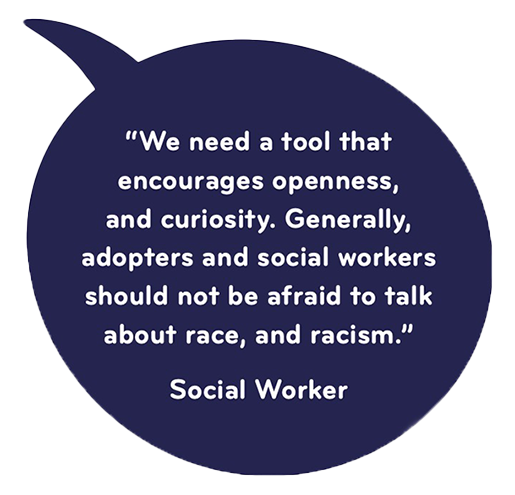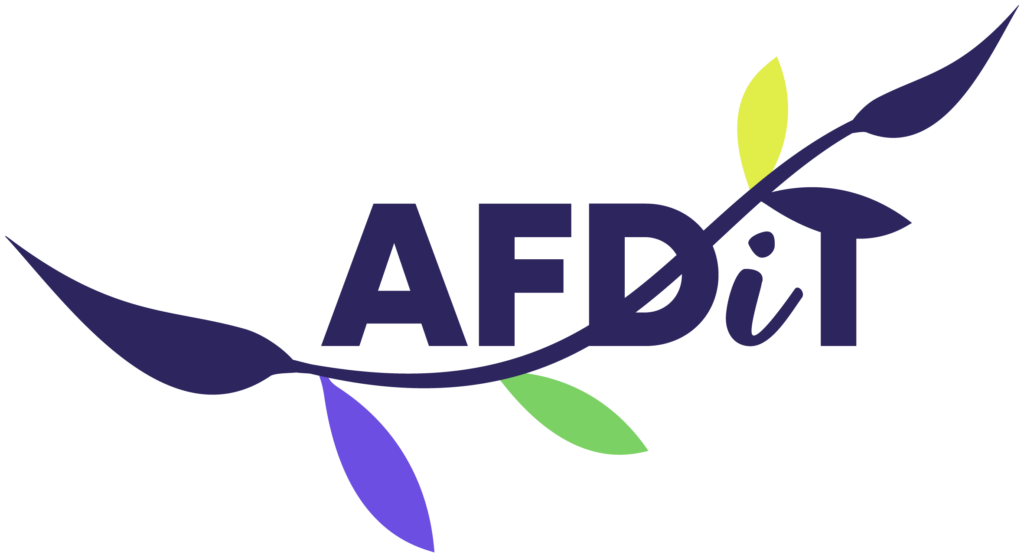Why is AFDiT needed?
AFDiT is a framework that is intended to ensure positive identity outcomes for all minoritised ethnic children moving into transracial adoption. It encourages a holistic consideration of the long-term implications of racial identity for Black, Asian, and minoritised, race and ethnic groups.
Service level provision for recruiting adoptive families from racialised and minoritised communities remains crucial to both increase and maximise the pool of potential matches for children from similar backgrounds. Moreover, service level provision for adoption support services must also be equipped to address racial, ethnic, and cultural identity issues. Among others, it is essential that these services provide appropriate emotional support, and facilitate support groups for transracially adopted children and adults, for example.
There are insufficient numbers of prospective adopters from minoritised racial and ethnic backgrounds to match the children of these backgrounds seeking adoption. It is this shortage that leads to a continuation of transracial adoption, while concerns around cultural genocide, internal colonisation and oppression of people of colour through transracial placements began around the 1960s (Ali, 2014).



Despite campaigns to attract adopters from Black and other minoritised backgrounds as well as amendments in legislation to promote racial and ethnic matching since the 1980s, there has been little progress. Minoritised ethnic children, particularly Black children, continue to be the most difficult to place (Barn, 2013). However, it is important to note that, government direction in the UK has prioritised avoiding strict ethnic matching in transracial adoption placements. While this change was intended to expedite the process and increase the number of timely placements, its practical implications have generated significant challenges for practitioners.
The shift in focus away from ethnic matching has created a sense of uncertainty and confusion among practitioners, making it difficult to navigate the complexities of transracial adoption effectively (Kirton, 2020). Practitioners in the field of transracial adoption are now confronted with conflicting expectations and professional standards due to the changes in government direction. This dissonance arises from the tension between the desire to adhere to the current policy guidelines and the awareness of potential consequences for children involved. The resulting dissonance, which arises from the conflicting beliefs and values, further compounds the challenges faced by practitioners. The complex nature of cognitive dissonance can lead to a tendency to overlook or minimise the challenges and disadvantages that transracial adoption may present for children.
This impulse to avoid addressing these costs may stem from the inherent discomfort associated with the conflicting beliefs and values surrounding transracial adoption.
When transracial adoption is not carefully managed, an adopted child may experience conflict in identity, a lack of self-worth, they may internalise colour blindness, or have an increased desire to explore racial and ethnic identities (Lee, 2003). In some studies, children from minoritised racial and ethnic groups in transracial adoptive homes wished their adoptive parents had seen their family as multi-cultural and allowed them to develop a true sense of racial identity (Freundlich and Lieberthal, 2000). A critical problem is that child protection and permanency work are grounded in Eurocentric understandings (Selwyn and Wijedesa, 2014). People with lived experience of transracial adoption report that the current adoption system fails to address key concerns regarding transracial adoption.
Firstly, adoptees face isolation and a lack of diversity within their adoptive family and in their wider surroundings; secondly, transracially adopted individuals encounter challenges in developing a healthy racial and cultural identity; thirdly, they become disconnected from their birth culture, and may encounter forms of racism, bigotry or prejudice from their adoptive family, whether it be the immediate or extended family, and similarly within community settings, and often adoptive parents are not equipped enough to deal with these problems.
These issues can be effectively addressed through enhanced practice policies and frameworks that take race into account, increased cultural competence training for adoptive families, and more rigorous assessments and preparation of prospective adoptive families’ commitment to meeting the unique cultural and racial needs of the child prior to finalising the adoption.
Having courageous conversations about differences in culture, race, ethnicity or religion is not intended to be seen as discriminatory practice but that which takes an open and sensitive approach to the long-term outcomes of children adopted transracially. We also hope that this framework serves as a cushion for practitioners doing their work courageously and ethically around issues of race, identity and culture.
This ‘anti-racist framework for decision-making and transitioning children from minoritised racial and ethnic groups into transracial adoptive families (AFDiT)’ to support children from minoritised ethnic groups moving from care into transracial adoptive families is focused on anti-racist decision-making, during the adoption pre-transition, transition and post-adoption support stages, to identify, guide, challenge and address issues that are likely to affect the racial identity of the adoptive child in the long term. It is a tool for social work practitioners to strengthen their decision-making and consider the right information, ask the right questions, ensure robust consideration around matching and linking, and implement the right strategies to remove bias in decision-making when moving a child to transracial adoption.
The tool encourages holistic consideration of the long-term implications of racial identity.



Note: In some instances the term post-adoption support is referenced as it was commonly known and used at the time of our research. However, ‘adoption support’ is now increasingly used to encompass support throughout the adoption process, from pre-adoption through to post-adoption. We are referring to adoption support broadly. You may use terms that are relevant and appropriate to your practice context.
